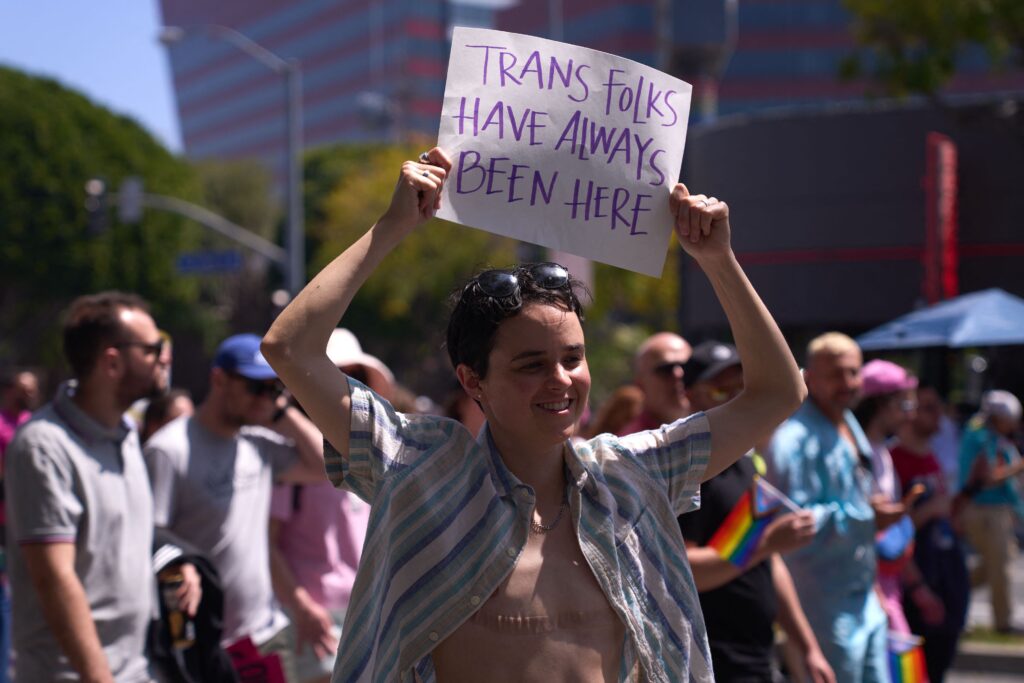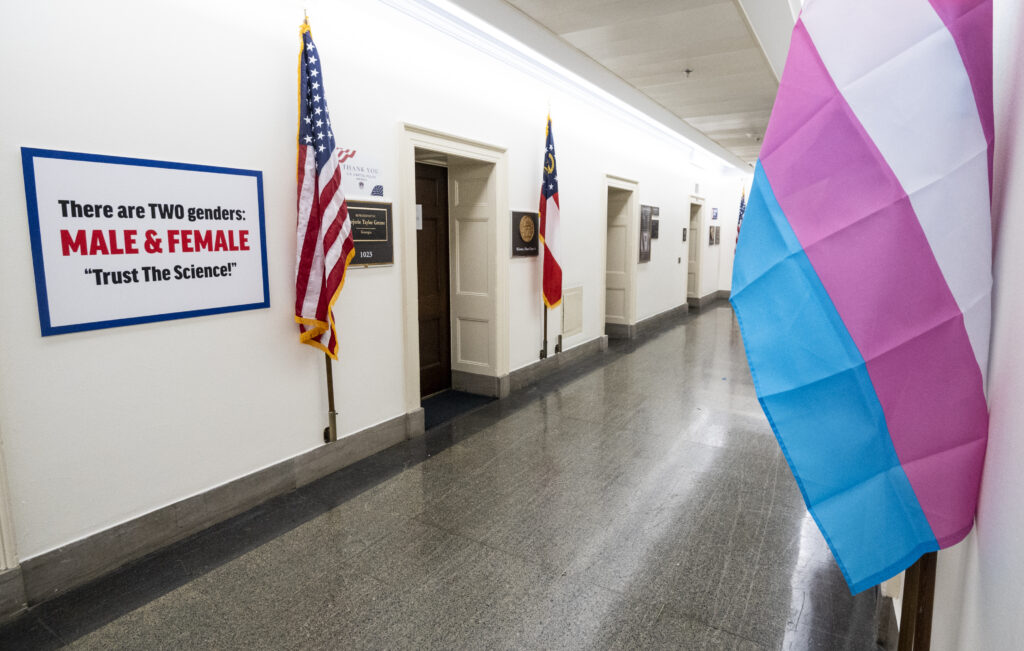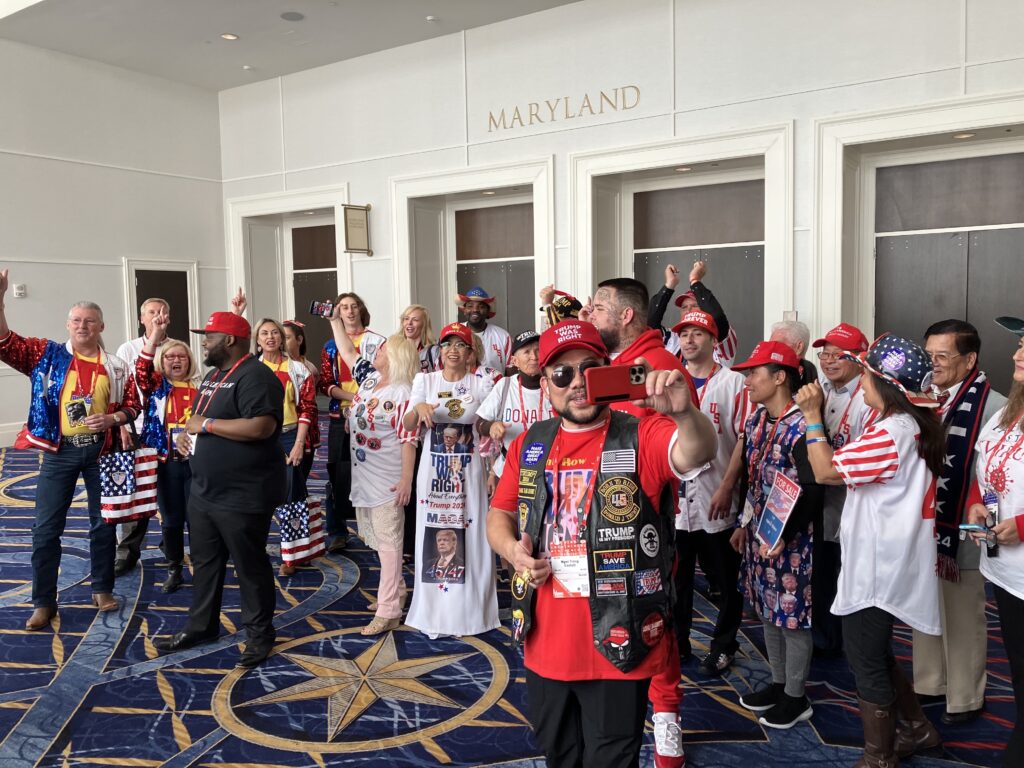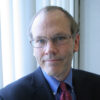Two Myths Fueling the Conservative Right’s Dangerous Transphobia
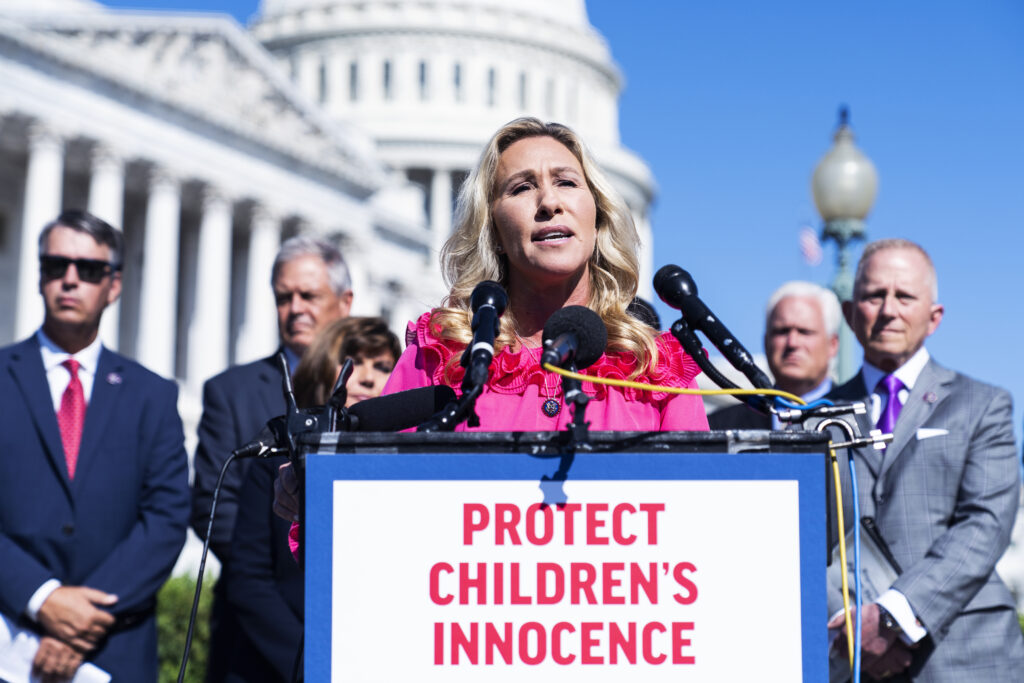
HOW THE RIGHT DEMONIZES TRANS PEOPLE
The lights dim. Trumpets sound. A rapid disco drumbeat begins to pulse.
Around me, the Make America Great Again crowd leaps to their feet and dances in the aisles to “YMCA,” the Village People’s 1978 hit classic. From experience, they know this song signals that former President Donald J. Trump will momentarily take the stage as the final speaker at the 2023 Conservative Political Action Conference (CPAC).
As the song blares and red, white, and blue lights flash, it is hard not to get caught up in the crowd’s energy. But I’m at this event as an anthropological observer seeking to understand this annual gathering of conservative activists and political figures that many on the left revile.
Now, as “YMCA” thunders in the cavernous hotel ballroom, I’m not sure what surprises me more: the fact that three nearby young men in blazers, who have been hunched over their phones for hours, have sprung to their feet—or the fact that a song many consider a gay anthem is being played for a group that is queer ambivalent at best and deeply transphobic at worst.
Indeed, many speakers at CPAC—a microcosm of the conservative right—have demonized transgender identity by drawing on two interrelated myths. The first is that gender is natural and so, by extension, transgender people are unnatural. The second myth maintains that transgender people, as “unnatural deviants,” are dangerous.
These myths enable discrimination and hate speech that put transgender people increasingly at risk and in the crosshairs of anti-trans commentators, legislators, and even extremists. As “YMCA” plays, I wonder if Trump will join the demonization of this marginalized group.
“I KNOW WHAT A WOMAN IS!”
In early March, I spent four days and nights at a resort outside Washington, D.C., with CPAC attendees. The event’s theme, “Protecting America Now,” was emblazoned on large banners on both sides of the CPAC conference stage. I wanted to learn who and what were viewed as threats. [1] [1] The research for this essay was supported by the Center for Politics and Race in America at Rutgers University, Newark.
As an anthropologist who studies political extremism and the far right in the U.S., much of the rhetoric was familiar. China, border “criminals,” “radical-left Marxists,” the “woke,” and the deep state were frequently singled out. But I was most surprised by the constant demonization of transgender people.
Read more from Alex Hinton, from the archives: “What White Power Supporters Hear Trump Saying.”
The anti-trans attacks were present from the start of CPAC. The kickoff session was led by women from the Leadership Institute, a conservative organization that has trained over 250,000 people in political activism. When one mentioned drag queen story time at a school, the crowd booed. Seizing the moment, the speaker declared, “I got a science degree. I know what a woman is!” The crowd cheered.
The catchphrase “I know what a woman is” gained traction among the far right after U.S. Supreme Court nominee Ketanji Brown Jackson’s confirmation hearings. When Sen. Marsha Blackburn asked, “Can you provide a definition for the word ‘woman’?,” Jackson refused to give a simplistic answer. At the beginning of her March 2 CPAC speech, Blackburn referred to this exchange by joking that she and her panel host were “powerful women who know how to define the term woman!”
None of the CPAC speakers defined such terms, however. Instead, they invoked a colloquial understanding that the difference between men and women is natural. CPAC speakers often evoked Christian religious understandings of the definition: “God creates us men and women.” At other times, they turned to biology—the seemingly “obvious” physical differences between men and women based on chromosomes.
This brings us to the two myths that need to be dispelled.
MYTH 1: GENDER IS NATURAL, SO TRANSGENDER PEOPLE ARE UNNATURAL
This myth conflates the critical distinction between sex and gender.
Sex refers to a set of perceived biological differences between males and females, though the biology of sex varies in complicated ways. Gender, in turn, refers to the ways in which these biological differences are understood, expressed, and categorized.
As opposed to being immutable and fixed, sex and especially gender are fluid. Gender expressions vary considerably across time, place, and person, as anthropologists and others have shown. Around the world, people understand gender in different ways. Some societies have a third gender, such as hijras in India, while many Native American communities have a gender status called “two-spirit.” Yet others view themselves as nonbinary. Gender conceptions also intersect with systems of power such as colonialism and patriarchy.
Transgender people, who have long existed throughout history, often experience incongruence with the gender identity that was ascribed to them at birth. A transgender person may choose to modify their appearance and bodies in ways ranging from changes in hair style and dress to hormone therapy or gender-affirming surgery.
MYTH 2: TRANSGENDER PEOPLE ARE DANGEROUS
The second myth holds that transgender people are deviant threats. One iteration of this myth centers on the conspiracist belief that LGBTQ+ people and their allies are “grooming” children to embrace queer and/or transgender identities. People who hold this view often depict gender-confirming therapies as the “mutilation” of innocent children’s bodies.
Rep. Marjorie Taylor Greene devoted most of her CPAC speech to the need to protect children from this “evil.” She promised to reintroduce the “Protect Children’s Innocence Act” that would “criminalize genital mutilation and chemical castration of minor children.”
This myth often presents trans people as unscrupulous, opportunistic, and exploitative. Many CPAC speakers, including all-American swimmer Riley Gaines, inveighed against trans female athletes, suggesting they unfairly use their biological advantages.
CPAC speakers also invoked the dangers of transgender people’s use of school bathrooms, which, they claimed, made other students feel uncomfortable or even put them at risk. This latter line of reasoning invokes trans people as a menace: the idea that they are predators, mentally ill, violent, “demons,” and even “trans terrorists.”
A REALITY: TRANS PEOPLE ARE THE ONES IN DANGER
These different iterations of the myths that transgender identity is unnatural and dangerous have been widely and repeatedly debunked. In reality, transgender people are the ones in danger.
At CPAC, this point was vividly illustrated when Daily Wire host Michael Knowles invoked the language of genocide. “Transgenderism must be eradicated from public life entirely,” he stated, using a derogatory term suggesting transgender identity is a “condition.”
LGBTQ+ people have faced a long history of violence and persecution, including during Nazi Germany. More recently, anti-queer animus has been rising sharply, especially hostility toward the trans and gender-nonconforming community.
Transgender people suffer from higher-than-normal rates of violence and physical and sexual assault—including in school bathrooms. They report high levels of harassment, including on the internet, as well as suicidal ideation. And they are being singled out by anti-queer extremists.
TRANSGENDER DEMONS AND A WARRIOR WITH AN ARMY TO SLAY THEM
Back at CPAC, the crowd roars as a voice bellows, “Ladies and Gentlemen, please welcome the next president of the United States: President Donald J. Trump!”
A sea of phones rise to record Trump’s entry as Lin Greenwood sings, “I’m proud to be an American …” Trump, wearing his signature red silk necktie, white shirt, and blue suit with flag lapel pin, meanders onto the stage. He pauses and claps his hands as people wave “TRUMP WINS AGAIN” signs. When the music stops, the crowd chants “USA! USA! USA!”
“The most important battle in our lives is taking place right now,” Trump begins, warning that “sinister forces” are trying to turn the U.S. into “a lawless, open-borders, crime-ridden, filthy, communist nightmare.”
Trump promises deliverance. “I am your warrior. I am your justice,” he says. To great applause, he includes “transgender insanity” among the demons he slayed. He brags that he banned it from the military while president.
Indeed, Trump’s administration rolled back a number of Obama-era transgender rights and protections. The Joe Biden administration, in turn, reversed Trump’s anti-trans initiatives, but conservatives have responded by pushing even harsher state and local-level legislation. This orchestrated campaign involves conservative politicians, commentators, media outlets, activists, and organizations. Many are at CPAC.
Trump needs the support of such groups to win, especially given his legal troubles. He has watched Florida Gov. Ron DeSantis rise in popularity by focusing on issues like transgender identity, which galvanizes the base. Trump has already promised to make himself a champion in this anti-trans fight if elected again.
“I will revoke every Biden policy promoting the chemical castration and sexual mutilation of our youth and ask Congress to send me a bill prohibiting child sexual mutilation,” Trump says as his speech draws to a close. The crowd roars its approval. And, “we will keep men out of women’s sports,” he adds.
I consider his remarks on “transgender insanity.” When he attacked “illegal aliens” and other non-white groups, white power violence surged. At his urging, Trump’s supporters stormed the U.S. Capitol in 2021. Now Trump appears ready to add fuel to the fires of the transphobia that is growing within the conservative right.
CPAC demonstrated to me just how vehement and broad this hostility is. For this reason, it is all the more critical to debunk the false myths that underpin the demonization of transgender people.


































